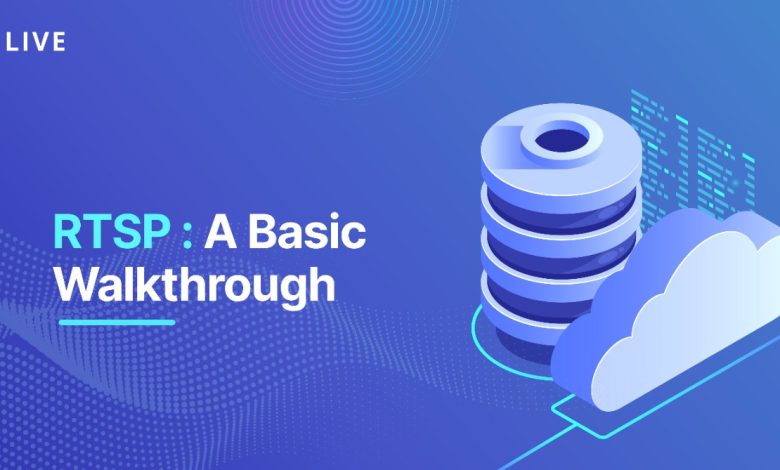RTSP: A Basic Walkthrough

Brief about RTSP
Real-time data transfer from server to user device is facilitated by the application-level network communication standard known as RTSP (Real-Time Streaming Protocol). In a nutshell, it establishes and oversees time-synchronized streams for continuous media streaming, acting as a network remote control. The best illustration of how it works is when a user clicks the video’s pause button. The video is halted after the streaming server receives the pause instruction through RTSP.
RTSP does not implement compression or specify a technique for compressing multimedia data or transport protocols. Additionally, streaming data cannot be transported using this protocol. A standard real-time transport protocol is used by the majority of RTSP servers to convey audio and video data in order to achieve this.
How it work ( workflow )
Without the need for any local downloads, RTSP is intended to govern streams. Its role is fundamentally comparable to that of HTTP and is described as a network remote control for media servers. An RTSP request is sent to the media server by a device utilizing the protocol when a video stream begins, starting the setup procedure.
The transmission control protocol then forms an end-to-end connection using RTSP, enabling fast streaming transmission rates.
In the existing situation, RTP/RTSP-based video streaming would probably require various media servers to ingest streams before using a different delivery channel to repackage streaming data and transfer content to consumers’ devices.
RTSP vs HLS ( which one is better)
Apple developed the HTTP-based streaming protocol known as HLS (HTTP Live Streaming) for both live and on-demand streaming. It enables a receiver to modify the media’s bit rate in accordance with the state of the network to guarantee uninterrupted playback at the best quality possible.
In this comparison, HLS is clearly superior to RTSP. This is due to RTCP’s numerous flaws and incompatibility with platforms from the present period. Likewise, any network instability results in missed frames, macroblocking, or other visual distortions because it lacks application-level error correction (and frequently runs over UDP, which lacks transport layer error correction). The video bitrate is how it functions.
Additionally, caching RTSP for wider delivery is challenging. It is therefore rarely used for online streaming. It operates most effectively in networks where the operator has total command over the network infrastructure.
In contrast, HLS is quite resistant to changes in the network. HLS can adjust to shifting bit rates as well. Browsers, existing caching systems, and content delivery networks all support it well because it is an HTTP transmission.
Now scale-up with Muvi
RTSP is challenging to scale and doesn’t really work well with a CDN. There are a number of respectable low-latency streaming services if low-latency is your main concern when choosing RTSP. Currently, CDNs are primarily focused on HTTP-based streaming technologies like HLS and DASH, however a few also support proprietary solutions, which are often built on WebRTC or WebSockets.
You may assume that streaming at low latency and maintaining several servers to scale in high concurrent volume of traffic are two major hassles.
Well with Muvi Live, you can efficiently live stream across devices and platforms. It automatically encodes and transcodes the HLS content into streamable digital format with multiple resolutions from 144p to up to 4k. It ensures your audience gets a buffer-free viewing experience with adaptive multi-bitrate
What’s the best part you ask? We are offering an exclusive 14-days free trial access to Muvi’s CRM to explore its enterprise-grade functionality.
Don’t just let this opportunity go, without further ado, start your free trial now!!!
Read More: Smart Restrooms Provide More Than Hygiene
.


